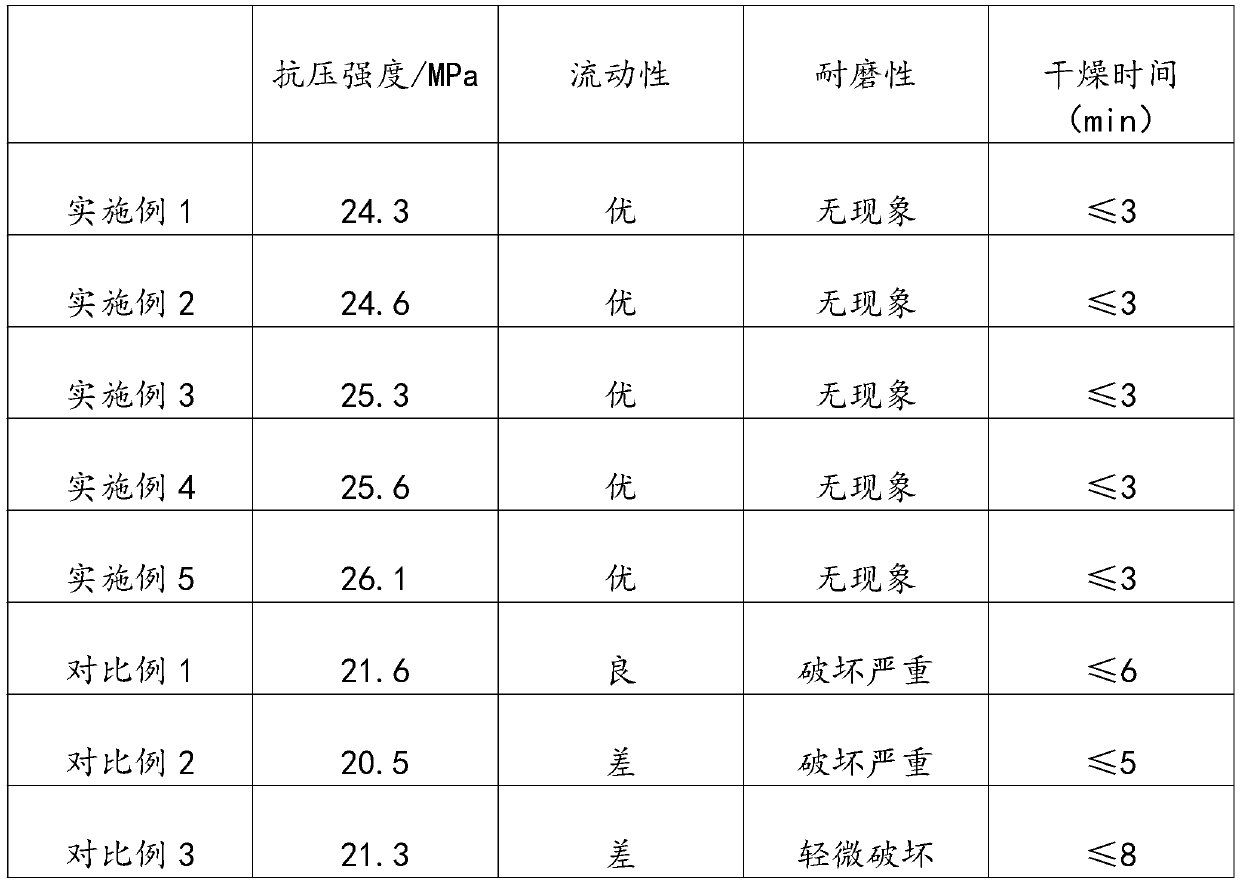Convex hot-melt marking line and preparation method thereof
A hot-melt and marking technology, applied in the field of marking, can solve the problems of wear resistance, poor film-forming stability, and marking lines that cannot meet the needs of use, etc., to achieve reduced entanglement, increased fluidity, and enhanced durability. The effect of grinding performance
- Summary
- Abstract
- Description
- Claims
- Application Information
AI Technical Summary
Problems solved by technology
Method used
Image
Examples
Embodiment 1
[0032] Raised hot-melt marking line, made of the following raw materials by weight: 10 parts of modified C5 petroleum resin, 5 parts of polyurethane, 30 parts of glass beads, 30 parts of nano-silica, 10 parts of calcium carbonate, 10 parts of titanium dioxide, 3 parts polypropylene wax, 2 parts stearic acid, 1 part glyceryl stearate, 1 part polydimethylsiloxane, 2 parts dioctyl terephthalate;
[0033] The raised hot-melt marking line is made by the following methods:
[0034] Step S1, mixing polypropylene wax, stearic acid and glyceryl stearate, heating to 120°C, stirring at a constant speed for 15 minutes, cooling, grinding and pulverizing, passing through a 200-300 mesh sieve to obtain a compound additive;
[0035]Step S2, mixing and grinding nano-silica, calcium carbonate, polyurethane, dioctyl terephthalate and titanium dioxide, then adding modified C5 petroleum resin, compounding additives and polydimethylsiloxane and heating to 70°C , to prepare a mixture;
[0036] Ste...
Embodiment 2
[0042] Raised hot-melt marking line, made of the following raw materials by weight: 12 parts of modified C5 petroleum resin, 6 parts of polyurethane, 33 parts of glass beads, 32 parts of nano-silica, 12 parts of calcium carbonate, 12 parts of titanium dioxide, 3 parts polypropylene wax, 2 parts stearic acid, 1 part glyceryl stearate, 1 part polydimethylsiloxane, 2 parts dioctyl terephthalate;
[0043] The raised hot-melt marking line is made by the following methods:
[0044] Step S1, mixing polypropylene wax, stearic acid and glyceryl stearate, heating to 120°C, stirring at a constant speed for 15 minutes, cooling, grinding and pulverizing, passing through a 200-300 mesh sieve to obtain a compound additive;
[0045] Step S2, mixing and grinding nano-silica, calcium carbonate, polyurethane, dioctyl terephthalate and titanium dioxide, then adding modified C5 petroleum resin, compounding additives and polydimethylsiloxane and heating to 70°C , to prepare a mixture;
[0046] St...
Embodiment 3
[0048] Raised hot-melt marking line, made of the following raw materials by weight: 14 parts of modified C5 petroleum resin, 8 parts of polyurethane, 40 parts of glass beads, 35 parts of nano-silica, 13 parts of calcium carbonate, 13 parts of titanium dioxide, 4 parts of polypropylene wax, 2 parts of stearic acid, 1 part of glyceryl stearate, 1 part of polydimethylsiloxane, 4 parts of dioctyl terephthalate;
[0049] The raised hot-melt marking line is made by the following methods:
[0050] Step S1, mix polypropylene wax, stearic acid and glyceryl stearate, heat to 120°C until it becomes completely liquid, stir at a constant speed for 15 minutes, cool, grind and pulverize, and pass through a 200-300 mesh sieve to obtain a composite Auxiliary;
[0051] Step S2, mixing and grinding nano-silica, calcium carbonate, polyurethane, dioctyl terephthalate and titanium dioxide, then adding modified C5 petroleum resin, compounding additives and polydimethylsiloxane and heating to 70°C ...
PUM
| Property | Measurement | Unit |
|---|---|---|
| Particle size | aaaaa | aaaaa |
Abstract
Description
Claims
Application Information
 Login to View More
Login to View More - R&D
- Intellectual Property
- Life Sciences
- Materials
- Tech Scout
- Unparalleled Data Quality
- Higher Quality Content
- 60% Fewer Hallucinations
Browse by: Latest US Patents, China's latest patents, Technical Efficacy Thesaurus, Application Domain, Technology Topic, Popular Technical Reports.
© 2025 PatSnap. All rights reserved.Legal|Privacy policy|Modern Slavery Act Transparency Statement|Sitemap|About US| Contact US: help@patsnap.com

